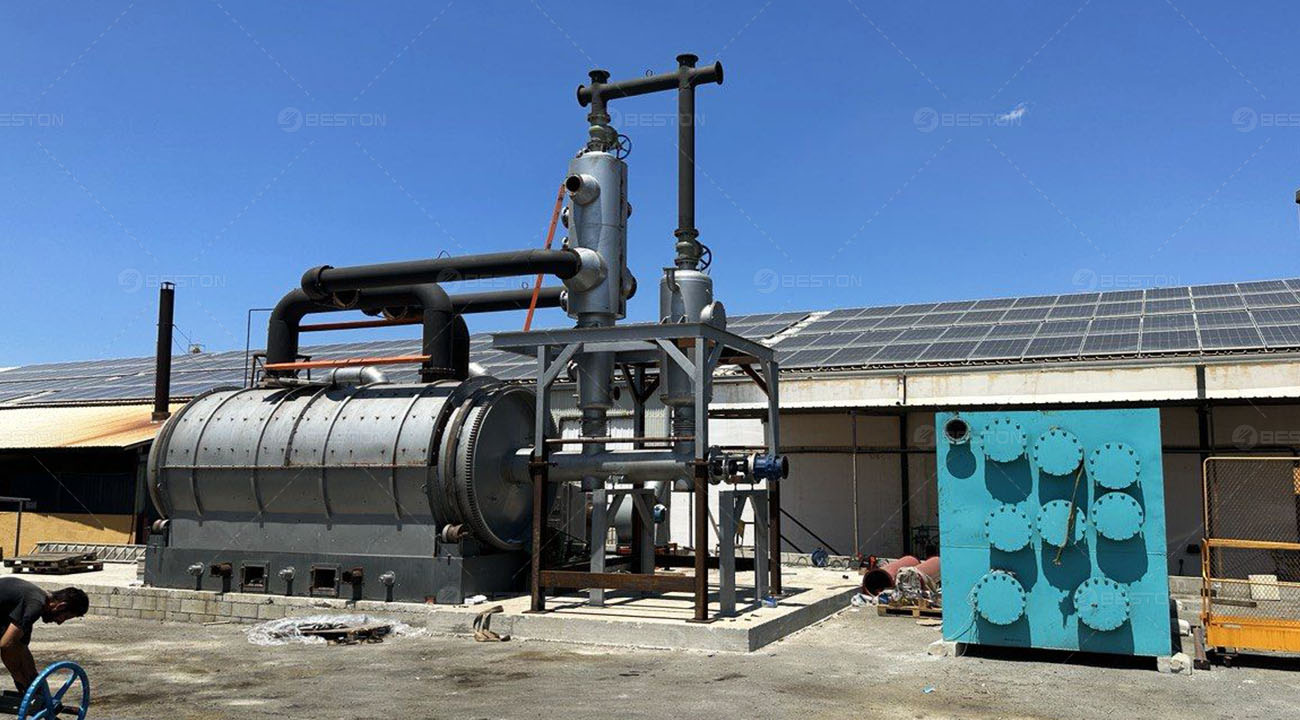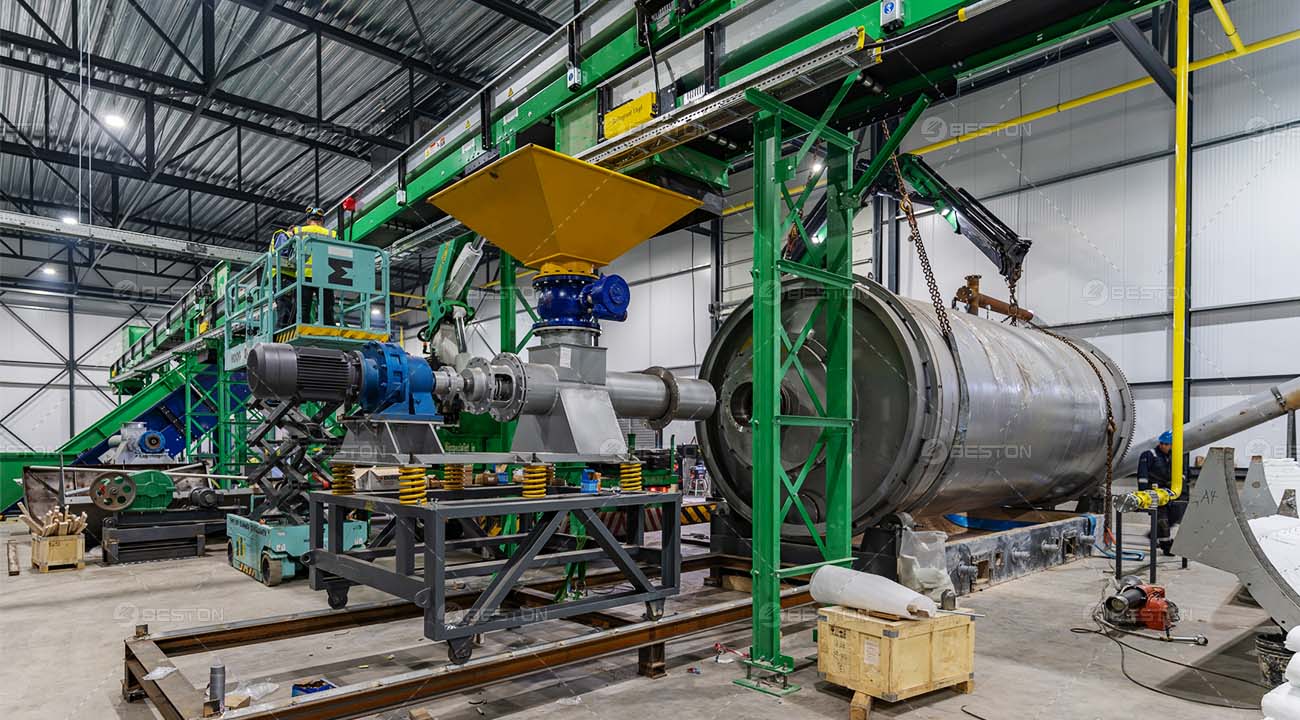Environmental protection has become a paramount concern in the modern era. With the escalating issues of pollution, resource depletion, and climate change, innovative technologies are gaining prominence in addressing these challenges. One such technology, pyrolysis, has emerged as a promising solution. This article explores the pivotal role of pyrolysis plants in safeguarding the environment by converting waste materials into valuable resources.
The Mechanism of Pyrolysis
Pyrolysis Process Fundamentals
The pyrolysis plant adopts a thermochemical process that involves the decomposition of organic materials in the absence of oxygen. This process relies on heat to break down complex molecules into simpler compounds.
- Types of Pyrolysis
- Slow Pyrolysis: A gradual heating process, typically at lower temperatures, which produces a higher quantity of biochar and is ideal for soil improvement.
- Fast Pyrolysis: A rapid heating process at higher temperatures, yielding a greater amount of pyrolysis oil and syngas, suitable for energy generation.
- Output Products
- Biochar: A carbon-rich material with high adsorption capacity, beneficial for soil enhancement and carbon sequestration.
- Syngas: A mixture of hydrogen and carbon monoxide, usable as a clean energy source.
- Pyrolysis Oil: A versatile liquid fuel or feedstock for various industrial processes.
Pyrolysis Plants in Waste Tire Recycling
Raw Materials for Tire Pyrolysis
A waste tyre pyrolysis plant primarily processes three types of raw materials:
- Tires: The most common feedstock, contributing to a reduction in tire waste and landfill problems.
- Plastics: Utilized alongside tires to enhance resource recovery and minimize plastic pollution.
- Sludge: Industrial and municipal sludge can be efficiently treated, reducing disposal issues.
Tire Pyrolysis Process
The tire pyrolysis process involves three main stages:
- Pre-processing: Shredding and preparation of feedstock into manageable sizes.
- Pyrolysis Reactor: The pyrolysis chamber where thermal decomposition occurs.
- Post-processing: Refining the output products into usable forms.
Environmental Benefits
- Reduced Landfill Waste: Pyrolysis minimizes the volume of waste tires and plastics ending up in landfills, alleviating environmental burdens.
- Resource Recovery: Valuable products like biochar and syngas are extracted from waste, promoting a circular economy.
- Lower Carbon Footprint: By converting waste into energy and carbon-rich products, pyrolysis contributes to reduced greenhouse gas emissions.

Environmental Impact and Sustainability
Reducing Greenhouse Gas Emissions
- Mitigating Methane Generation: By diverting organic waste materials from landfills, pyrolysis plant for sale reduces methane emissions, a potent greenhouse gas.
- Sustainable Energy Generation: The syngas produced in pyrolysis can replace fossil fuels, reducing CO2 emissions and supporting a sustainable energy mix.
Soil Remediation with Biochar
- Soil Fertility Improvement: Biochar enhances soil structure, nutrient retention, and microbial activity, contributing to sustainable agriculture.
- Carbon Sequestration: Biochar stores carbon in the soil for centuries, offsetting carbon emissions and aiding in climate change mitigation.
Circular Economy Approach
- Closed-Loop Resource Management: Pyrolysis aligns with the principles of a circular economy by recovering resources from waste materials.
- Waste Minimization: Reducing waste through pyrolysis reduces the need for virgin resources, conserving natural habitats and reducing environmental impacts.
Challenges and Future Prospects
Technological Advancements
- Catalysts and Reactor Design: Ongoing research aims to improve pyrolysis efficiency through advanced catalysts and reactor designs.
- Process Efficiency: Innovations seek to optimize energy utilization and product yields, making pyrolysis more economically viable.
Regulatory Frameworks
- Environmental Regulations: Stringent environmental regulations drive the adoption of cleaner technologies like pyrolysis.
- Waste Management Policies: Governments worldwide are promoting waste-to-resource initiatives, providing incentives for pyrolysis implementation.
Economic Viability
- Scalability and Cost Reduction: As pyrolysis technology matures, scaling up production and reducing operational costs become key priorities.
- Market Demand: Growing awareness of environmental issues and sustainable practices augments the market demand for pyrolysis products. If you want to choose a reliable manufacturer, Beston Group is recommended here.
In conclusion, pyrolysis plants represent a critical tool in environmental protection efforts. Through the efficient conversion of waste materials into valuable resources, pyrolysis not only mitigates environmental harm but also contributes to a more sustainable and circular economy. The challenges ahead lie in refining technology, aligning with regulatory frameworks, and ensuring economic viability, paving the way for a cleaner and greener future.